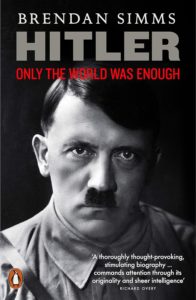 For the first eighteen months or so after his political emergence in 1919, Hitler seems to have conceived of the revival of Germany as a long-term process, in which he would play a supporting role, and which he might not live to witness himself. Even after his shift from Trommler to Fuhrer in mid 1921, he advocated a steady process of ideological transformation rather than an insurrectionary takeover. During this period Hitler was an attentiste, waiting for his propaganda and the march of events to turn the German population in his direction. ‘People are still far too well off,’ he remarked to Hanfstaengl, ‘only when things are really bad will they flock to us.’
For the first eighteen months or so after his political emergence in 1919, Hitler seems to have conceived of the revival of Germany as a long-term process, in which he would play a supporting role, and which he might not live to witness himself. Even after his shift from Trommler to Fuhrer in mid 1921, he advocated a steady process of ideological transformation rather than an insurrectionary takeover. During this period Hitler was an attentiste, waiting for his propaganda and the march of events to turn the German population in his direction. ‘People are still far too well off,’ he remarked to Hanfstaengl, ‘only when things are really bad will they flock to us.’
In the second half of 1922, however, in the first of many temporal shifts in Hitler’s career, he began to envisage a much shorter timeline. A new urgency crept into his rhetoric and actions; evolutionary languor gave way to revolutionary fervour. Germany, he argued, needed a ‘dictator’, that is, ‘a man who if necessary can go over blood and corpses’. His regime ‘could then be replaced by a form of government similar to that of the Lord Protector’, which in turn could be followed by a monarchy. This recourse to English history, which gives a sense of Hitler’s range of historical reference, was a clever pitch for conservative backing for a coup which would give him dictatorial power, but held out the prospect of an evolution via a German Cromwell and a General Monk to the restoration of the monarchy. Driving this process was Hitler’s growing conviction not only that he alone could save the country, but that a perfect storm of domestic challenges and external threats made it imperative that he do so soon. Time was speeding up. Germany was out of joint, and Hitler was more and more convinced that only he could put things right.